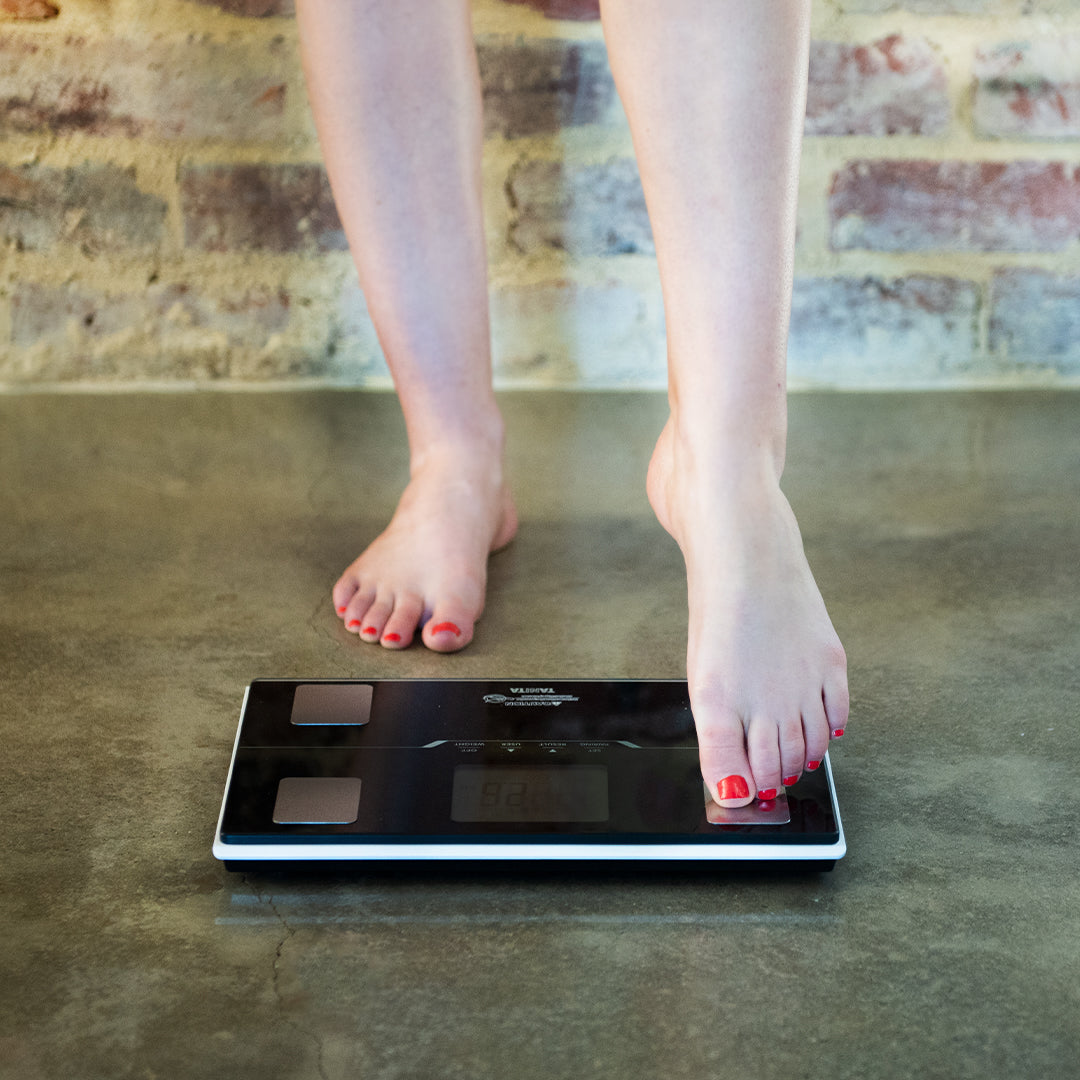What Is A Body Composition Monitor?

What Is A Body Composition Monitor?
Say goodbye to your bathroom scales.
Intro
With the new year coming up fast (and that summer sunshine already here), you’re probably starting to think about getting outside and getting a bit more active too.
Whenever we jump back into a renewed health and fitness mindset, it’s easy to get started and then quickly lose motivation because we’re not able to see short term results - or worse, we see results that make us think we’re going in the wrong direction.
The main issue with measuring results is that we often rely on limited tools with limited metrics to show us how we’re progressing, and a major example of this is that much maligned set of bathroom scales.
But with a new year comes an opportunity to try something new - like finally ditching overall weight as the only measurement of your health and fitness, and switching to tracking body composition instead.
Body Composition vs Weight
For years, people have been relying on weight measurements to determine their overall health. Be real - how many times have you stepped on the bathroom scales and told yourself you “need to lose weight” in order to get healthy again?
The reality is that total body weight is only one factor that figures into our overall health, and relying only on this measurement can often do you more harm than good - both from a results perspective, but also from a motivational and mindset perspective too.
As science evolves, so does our understanding of the human body: for example, over the years the fact that muscle weighs more than fat has become common knowledge, which again highlights why you shouldn’t rely only on overall weight as a measurement of your health.
So what’s the alternative?
In recent years, more and more health and fitness experts have switched to using body composition for a more comprehensive and accurate way of assessing someone’s overall body health.
Body composition encompasses a range of factors, including your body fat percentage & mass, visceral fat levels, muscle and bone mass and even your total body water levels to name a few.
Body Composition Monitors vs Scales
All of these measurements factor into your overall weight of course, but stepping on the bathroom scales won’t give you a breakdown of each. That’s where a body composition monitor is superior.
Here are a few of your key metrics that a Tanita Body Composition Monitor can provide you with information on:
Body Fat Percentage & Body Fat Mass
Body fat percentage is the proportion of fat compared to your total body weight, and body fat mass is the actual weight of fat in your body.
Having your body fat fall into a healthy range for your age and gender is important for your long-term health and can reduce the risk of a range of health conditions and diseases (high blood pressure, heart disease, type 2 diabetes and certain cancers).
Visceral Fat
We have three different types of fat throughout our body: essential (necessary for the function of our bodies), subcutaneous (found under our skin) and visceral.
Visceral fat is located deep in the core abdominal area, surrounding and protecting our vital organs. It’s this type of fat that can be dangerous in high levels (such as an increased risk of a number of diseases) so being able to accurately measure this is incredibly useful.
Muscle Mass
Muscle mass is the predicted weight of muscle in your body based on skeletal muscles and smooth muscles (such as cardiac and digestive muscles), as well as the water contained within them.
Increasing muscle mass is a primary fitness goal for many people, and an increase in this will likely affect your total body weight too, which is why weight-only scales aren’t an accurate way to measure this.
Total Body Water
Total body water is the total amount of fluid in the body expressed as a percentage of total weight.
Our bodies need water to function properly: we regularly lose water through urine, sweat and even breathing, so being able to monitor the water levels in your body is key to a healthy lifestyle.
But it’s also an important metric to keep in mind for your overall fitness too. Lean body mass carries more body water than body fat, so as your muscle and fat levels change, so will your total body water levels.
Bone Mass
Bone mass is the predicted weight of bone mineral in your body, and while it’s unlikely that this metric will noticeably change over the short term, any drastic changes may indicate a change in your body’s calcium levels.
Physique Rating
This rating is made based on the balance of your body fat and muscle mass levels, so you’ll be able to see your physique rating change over time due to changes in your diet and activity.
Conclusion
Having so many more key metrics available to you not only makes it easier to accurately track your overall health and fitness, but it also makes it easier to find out where adjustments in your diet and/or activity need to be made in order to further your progress.
These metrics can also give you peace of mind that you’re on the right track too. In times when your body weight is static, you may have been disheartened and falsely guessed that your current routine isn’t working. When you know ALL of your measurements, you know that while your weight may be remaining the same, your fat levels are reducing and your muscle mass is increasing.
Check out our range of Body Composition Monitors today, and invest in your long-term health for the new year and beyond - that’s a resolution everyone can get behind.

